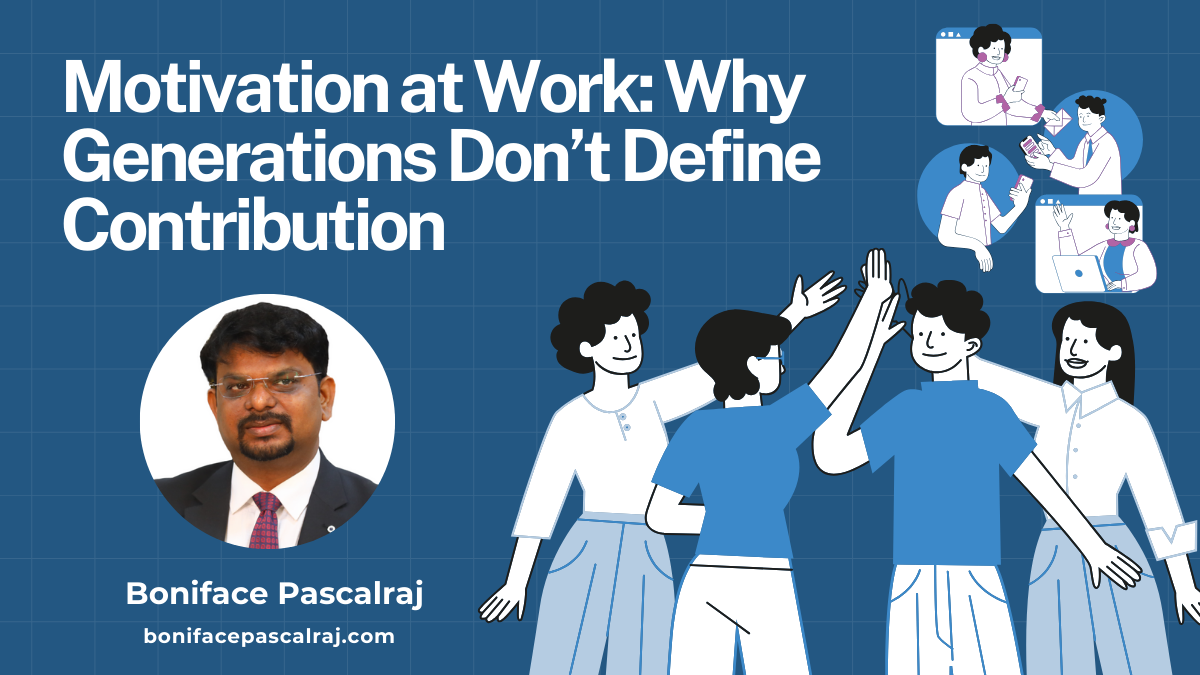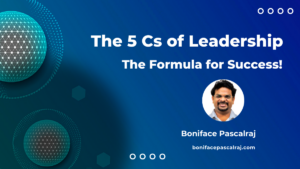In recent times, a common industry narrative has emerged around Gen Z employees. Many managers cite concerns about their attitude towards work, pointing to a perceived focus on lifestyle comforts, short-term gains, and an overconfidence that sidelines experience. However, painting an entire generation with the same brush oversimplifies the complexities of workplace behavior and overlooks a more valuable lens: motivation.
As someone who has built and led teams in both startup and corporate settings, I believe motivation—not age—is the key driver of work ethic, learning, and contribution. In this article, I explore generational observations, motivational psychology, and team dynamics to reframe how we understand workplace behavior and performance.
The Generational Framework: Rajiv Talreja’s Lens
Rajiv Talreja, a business coach, classifies people into three generational mindsets based on their relationship with work:
Survival Mode – The older generation (likely our grandparents), who worked under tough conditions and accepted disrespect or hardship for the sake of keeping their jobs. Their primary focus was on basic sustenance.
Affordability Mode – The middle generation (our own), who work to afford homes, cars, and education—pushing forward while balancing EMIs and social expectations.
Lifestyle Mode – The current generation, including Gen Z, who prioritize work-life balance, seek experiences, and define success through lifestyle choices more than possessions or hierarchy.
While Rajiv notes that the survival mode generation is largely phased out, in an Indian context, pockets of this mindset still exist, especially in economically underprivileged or rural segments.
Maslow’s Hierarchy and Generational Motivation
Maslow’s pyramid of human needs offers a parallel framework:
Physiological & Safety Needs align with the Survival Generation.
Belongingness & Esteem Needs map to the Affordability Generation.
Self-Actualization is where Lifestyle-driven individuals may reside—if they are intrinsically motivated.
However, not all individuals from a generation operate at the same level in this pyramid. A young employee might be in survival mode due to personal challenges, while a 50-year-old might finally pursue a self-actualized goal. This makes motivation, not age, the more reliable predictor of performance.
Self-Transcendence: Going Beyond
Viktor Frankl expanded Maslow’s model by adding a sixth level: Self-Transcendence. This is where people pursue a purpose beyond themselves. In the workplace, these individuals often act as mentors, nurture younger teammates, and elevate the team with their quiet leadership. They are purpose-driven and believe in giving back.
Intrinsic vs. Extrinsic Motivation: The Real Differentiator
Extrinsically motivated people work for external rewards—money, titles, recognition.
Intrinsically motivated individuals do the work because they love it. They find meaning and joy in contribution and learning.
This internal drive often separates the outstanding from the average—regardless of age.
“People will never see 90 percent of what you do,” Jeff Bezos once said.
“The only thing that makes you have high standards on that work that nobody ever sees is your own professional pride in operational excellence.”
This quote is a brilliant articulation of intrinsic motivation. It reminds us that true professionals hold themselves to high standards, not for applause but because of who they are.
A Gen Z team member driven by purpose can outshine a millennial co-worker chasing titles. Likewise, a millennial passionate about impact can be more reliable than a Gen Z employee focused only on perks.
My Experience: Looking Beyond Labels
In my leadership journey, I have seen examples that break stereotypes:
In this blog, I highlighted a Gen Z team member who earned trust and took ownership early on.
In another story, I showcased how a young Gen Z intern took initiative and transformed outcomes through her commitment and passion.
On the flip side, I have encountered millennials who were unwilling to collaborate, focused only on individual growth, and resistant to feedback.
Some of them were not open to learning, resisted feedback, and attempted to imitate high performers without engaging in genuine growth. They avoided accountability and, at times, were overshadowed by those who were consistent and committed—but did not take the effort to rise themselves.
In short, motivation, learning mindset, and behavior—not age—should be the criteria for how we judge contribution.
A Smarter Approach to Talent Management
Rather than generational generalizations, a more effective approach is to:
Assess individual motivation: Understand whether a person is driven by intrinsic goals or external rewards.
Tailor encouragement: Match leadership and mentoring styles to the individual’s stage in Maslow’s pyramid.
Invest in culture and context: Build an environment where self-actualization is possible—for those who seek it.
Reward initiative and reliability: Encourage behaviors that signal accountability, curiosity, and team spirit.
Jeff Bezos’ insight rings true here as well:
“People will never see 90 percent of what you do…”
“The only thing that makes you have high standards on that work that nobody ever sees is your own professional pride in operational excellence.”
Recognizing and nurturing this type of invisible excellence helps foster a culture where quiet consistency is valued just as much as visible wins.
Connecting to Broader Team Dynamics
I have explored this topic further in a complementary article:
Navigating Team Dynamics: A Guide for Startup Founders and Business Leaders
In that piece, I share practical strategies for managing mixed-skill and mixed-mindset teams in startups, focusing on accountability, trust, and leveraging individual strengths. Together, these frameworks provide a more holistic understanding of how founders and managers can build and sustain winning teams—without falling into the trap of generational stereotypes.
Generations don’t define work ethic. Motivation does.
But at the same time, I strongly believe motivation is only the beginning—a spark. To become a high performer, one must embrace self-discipline, move beyond comfort zones, solve critical problems, have clarity of thought, and maintain consistency.
I have discussed this in detail in my article: The 5 Cs of Leadership Success
Let us move away from tired stereotypes and start asking better questions:
What drives this person? How can I support their growth?
By leading with curiosity and empathy, we can build stronger teams and foster a culture that transcends age, inspires trust, and delivers impact.



